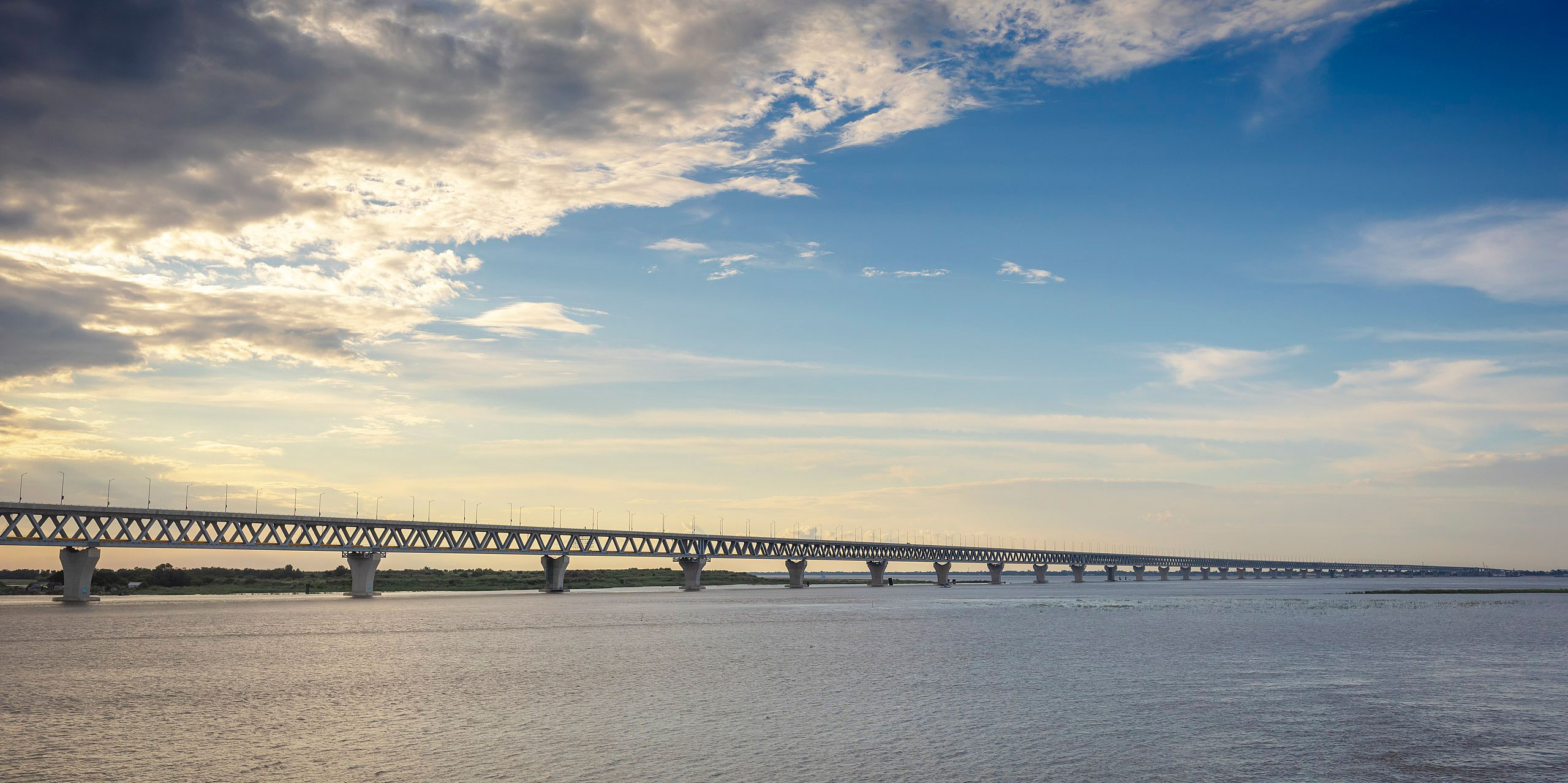
The Challenge
The Padma (Ganges) river has the second largest water volume in the world. This posed a huge obstacle to Bangladesh’s economic development and connectivity of Dhaka to regional communities south of the Capital. A combined road and railway bridge would facilitate efficient movement of goods and people. Key challenges of Padma Multi-purpose Bridge were:
- Pile capacity to resist lateral force from the massive river current and seismic movement.
- Riverbank erosion and bed level variation
- Navigation control during construction
- Considered management of dredged materials to minimise impacts on the biodiversity








The Solution
The bridge is approximately 6.15km long and 21.1m wide with approximately 13.6 km of approach roads and bridge-end facilities, including toll plazas, service areas and offices. The bridge consists of two decks with a four lane highway on the top and a single track dual gauge rail line below. Ancillary services are also included to transfer gas, power and tele-communication lines. The main bridge is a two-level steel truss superstructure acting compositely with a reinforced concrete deck slab. The double deck composite steel truss structure uses 41 piers with the main spans up to 150m long.
SMEC’s services included bridge design verification, foundation works, river training, geotechnical engineering, quality control, environment, social, materials, hydrology, bathymetry, electrical engineering, dredging design, project management, surveying and contract administration.
- Modern engineering technology was used to design the pre-tensioning Super-T girder for all the viaduct bridge.
- Padma Bridge is the first all-weld, 3-layer coating painted super-thick-steel, double-duty steel truss bridge following European standards in Bangladesh. The project incorporates some of the largest bearings ever used on a bridge, weighing 10,500 metric tons (1,05,00000 KGs) each.
- Skin grouting and base grouting technology was introduced to enhance bearing capacity of the soil around the steel piles.
- A giant floating crane with 3,600 tons capacity was used to install 41 No. 150m length steel span truss along the pillars.
- Three hydraulic hammers (1900KJ/2400KJ/3500KJ capacity) were brought from Germany to drive the steel piles which are 98m ~122m long. Inclined piles were specially designed to resist the lateral force.
- Approximately 1,70,000 new trees were completed up to January 2021 along the resettlement area, approach road and service areas. A Biodiversity Management Plan includes, wildlife baseline monitoring including the national fish- Hilsha. Sound levels were monitored during pile driving.
The Impact
The Padma Multi-Purpose Bridge connects Louhagonj, Munshiganj to Shariatpur and Madaripur linking the south-west of the country, to northern and eastern regions, reducing the distance between the regions & Dhaka by 100-150 kilometres. The new bridge will enable travel times to be reduced by up to five hours.
The impacts will increase transport efficiency, augment economic development in rural areas, and enrich social development by connecting planned growth centres. Businesses will benefit from greater access to regional markets, travel times and vehicle operating costs will be significantly reduced, and tourism is expected to rise, leading to accelerated economic activity.




